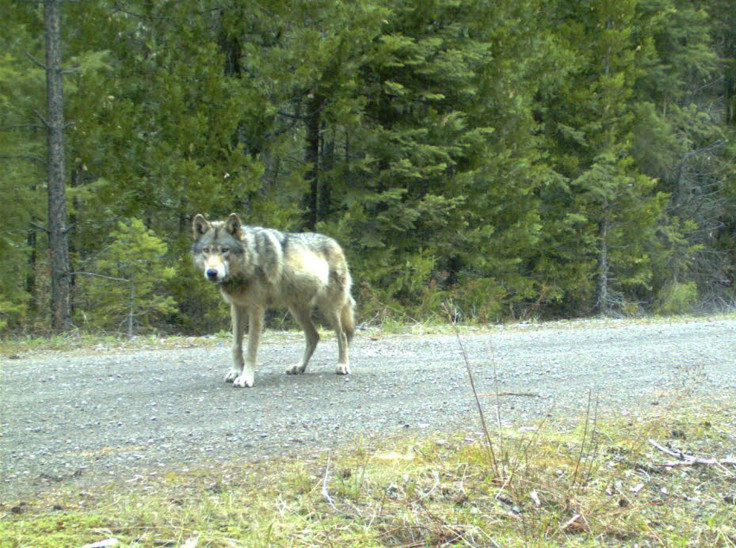Rare Gray Wolf Spotted In The Grand Canyon Might Have Been Shot, Killed In Utah

A wolf shot and killed by a hunter in Utah who allegedly mistook it for a coyote might have been an endangered gray wolf spotted near the Grand Canyon earlier in October, according to media reports. The wolf, believed to be a female fitted with a radio collar, was reportedly shot dead by an unnamed hunter near the Arizona border on Sunday, wildlife officials from Utah reportedly said.
The shooting, which has reportedly come under sharp criticism from several conservationists, is now being investigated as a possible violation of federal and state wildlife laws. Under the U.S. Endangered Species Act of 1973, harming, wounding or killing of an endangered species is a punishable offense. The gray wolf is protected under the law in most states. However, coyotes, which are common and aren’t federally protected, are allowed to be shot on sight.
Authorities suspect that the wolf might be the same one spotted several times near the northern rim of the Grand Canyon since October, according to media reports. The wolf, named “Echo,” was reportedly confirmed through genetic analysis to be a female originating from the northern Rocky Mountains, over 450 miles away.
Chris Cline, an official with the U.S. Fish and Wildlife Service, reportedly said that Echo was the first gray wolf seen in the Grand Canyon since the 1940s, when they were hunted down as part of an extensive eradication campaign.
While the identity of the slain wolf will be determined in the coming weeks, wildlife activists reportedly said that the incident was “shameful,” whether or not the wolf was Echo.
“It's very sad either way,” Michael Robinson from the Center for Biological Diversity, an Arizona-based nonprofit conservation organization, reportedly said, adding that wolves in Utah need “real, on-the-ground” protection.
“That means, first, keeping them on the endangered species list; second, spreading the word about their presence as an endangered species; third, prosecuting those who kill them … so that instead of one or two lone and vulnerable wolves, Utah and the West will eventually boast hundreds more wolves to stave off extinction and help keep ecosystems in healthy balance,” Robinson reportedly said.
© Copyright IBTimes 2025. All rights reserved.






















